Not only monkeys can break hard shells, birds can too.
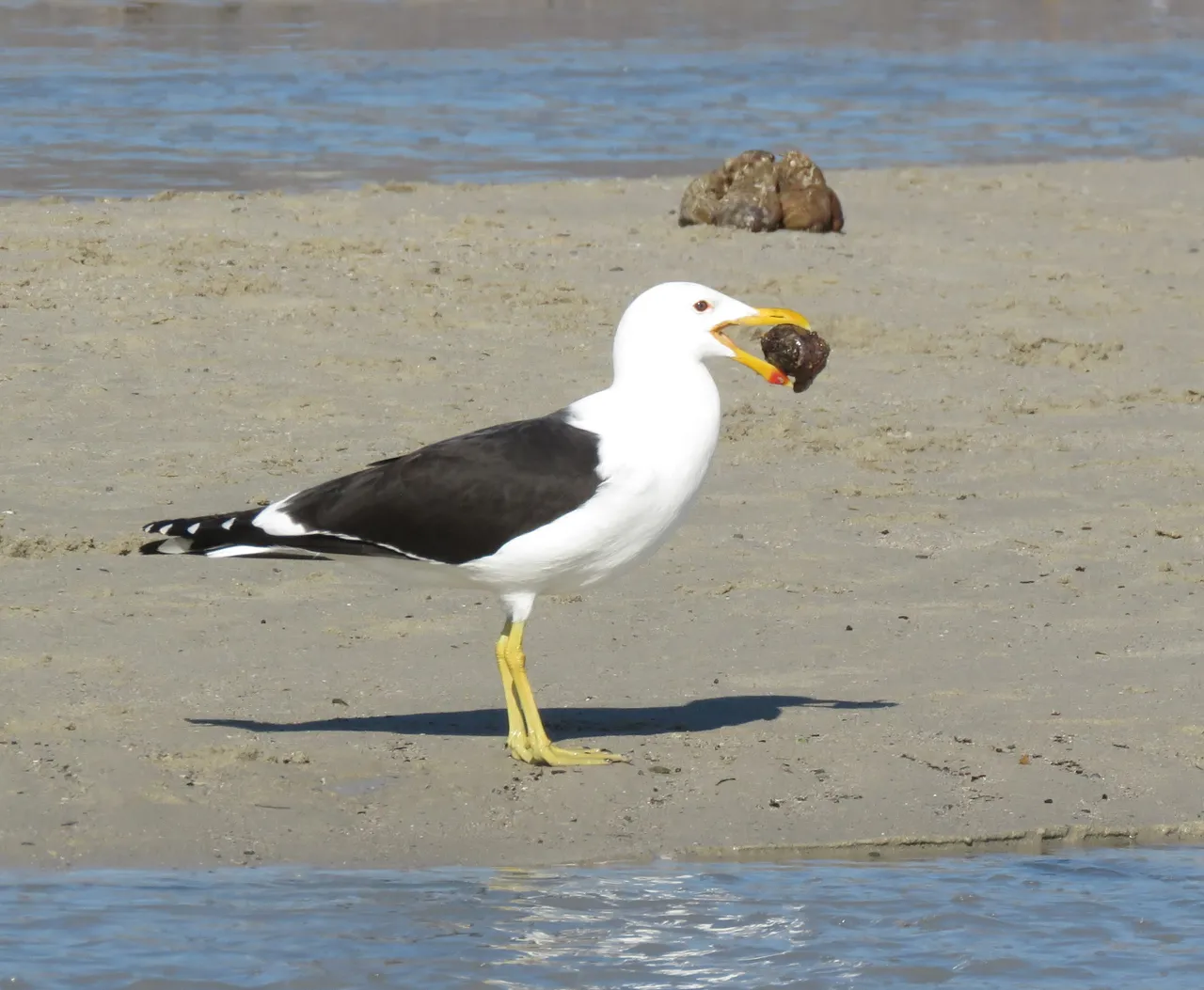
Watch this guy, as he knows that there is a juicy Sea Squirt inside that hard shell.
Post 1 will show you how the bird cracks the shell.
Post 2 will show you the sea squirts.
Both posts are in here.
A short walk on the beach delivered up these amazing Kelp Gull actions.
The shell of the seasquirt was baked hard in the morning sun at low tide and the bird had an innovative way to get at the meat inside the shell.
Come and see.
Right, there he goes and come watch how he breaks the hard shell.
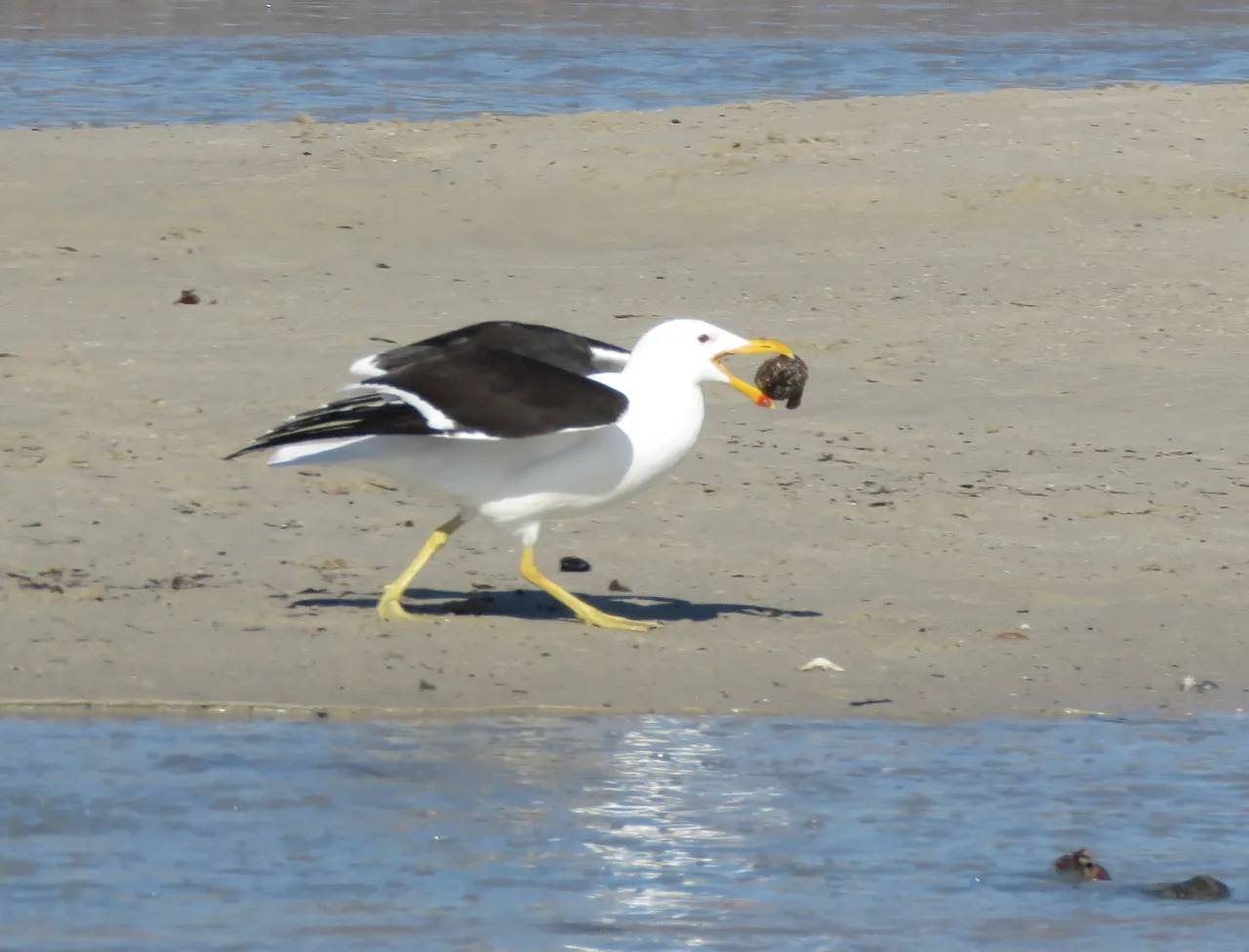
Up at speed into the sky he went.
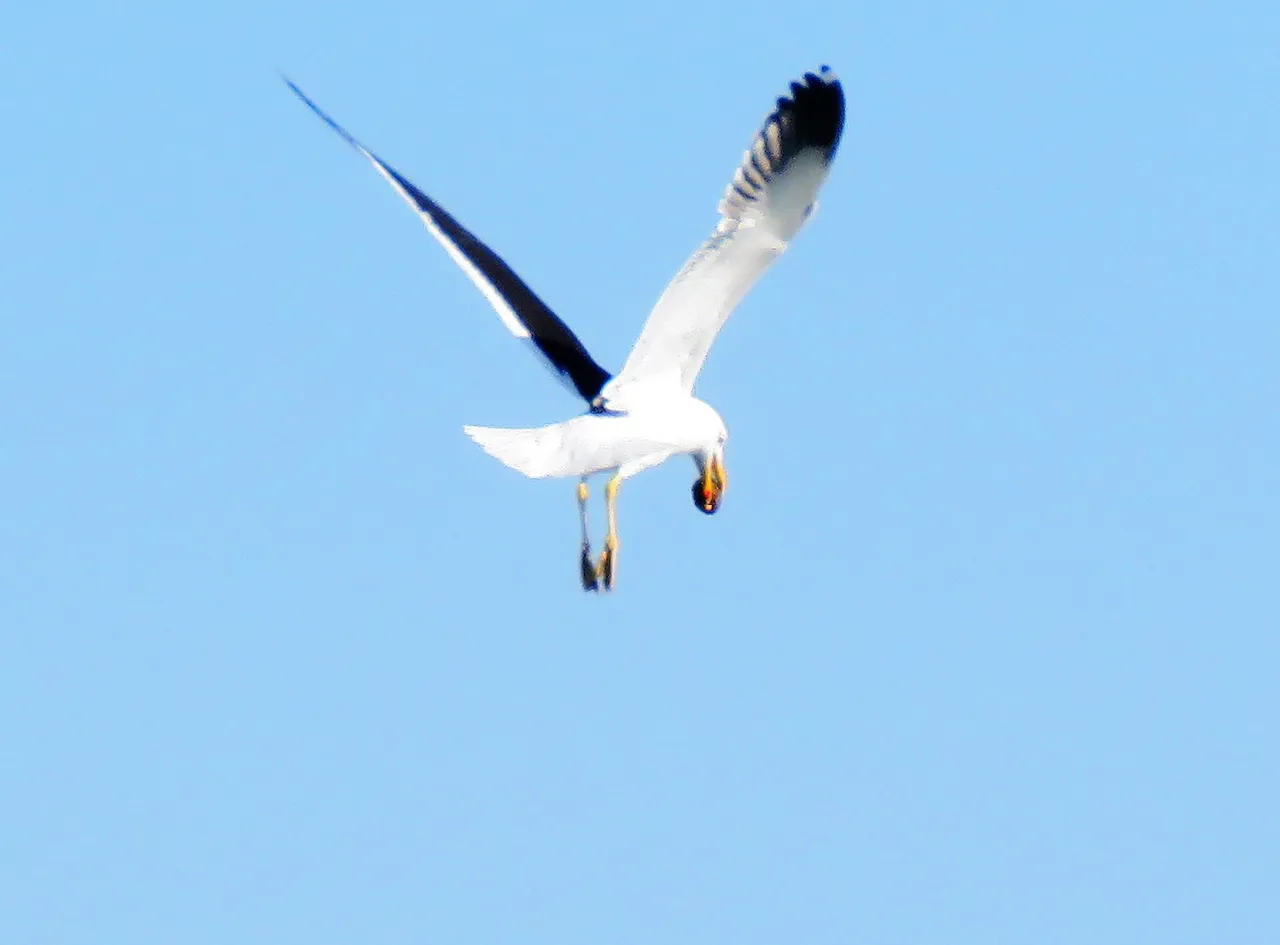
Carefully selecting his spot in the rocks in the shallows.
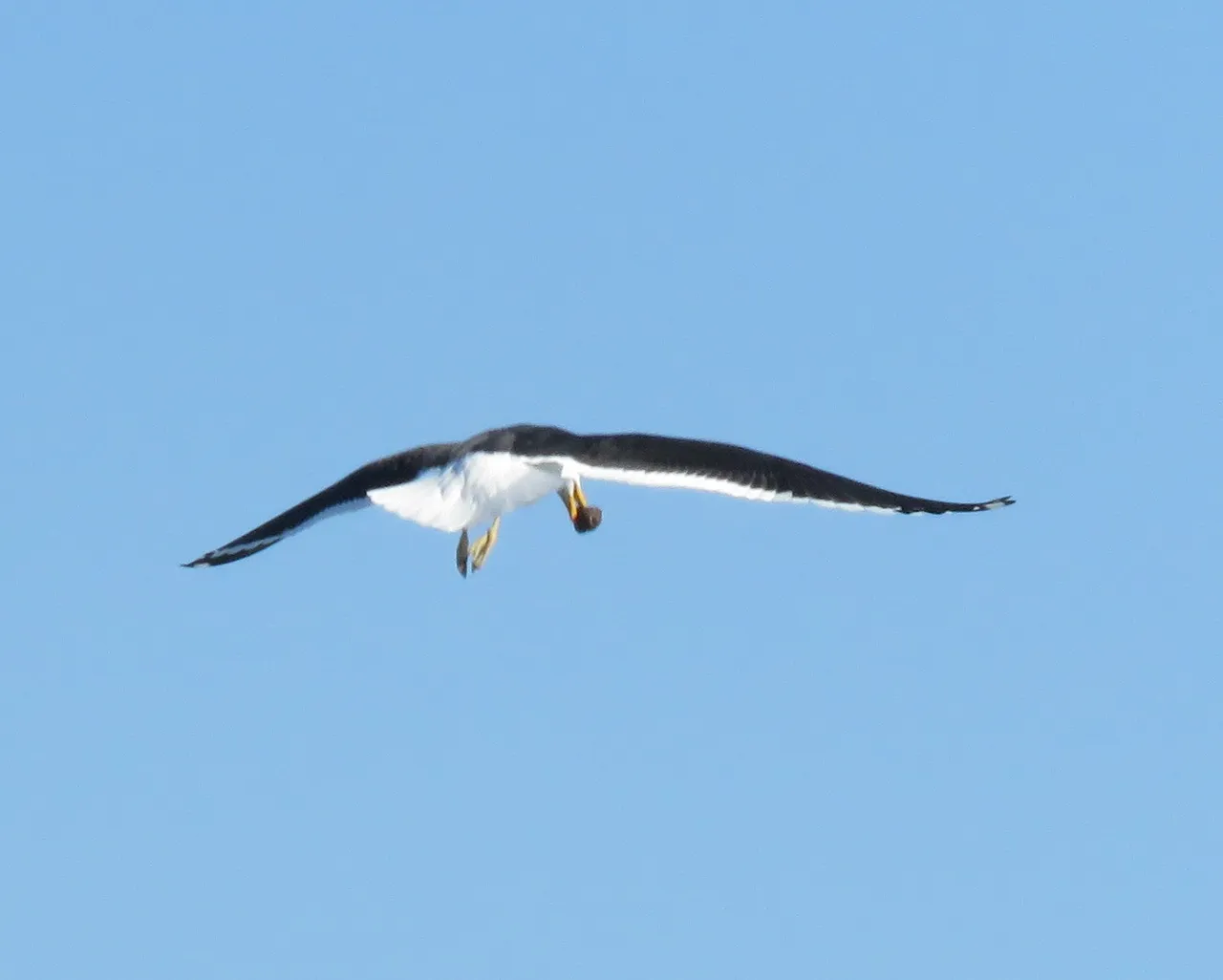
Boom, he dropped the shell down onto the rocks in the water.
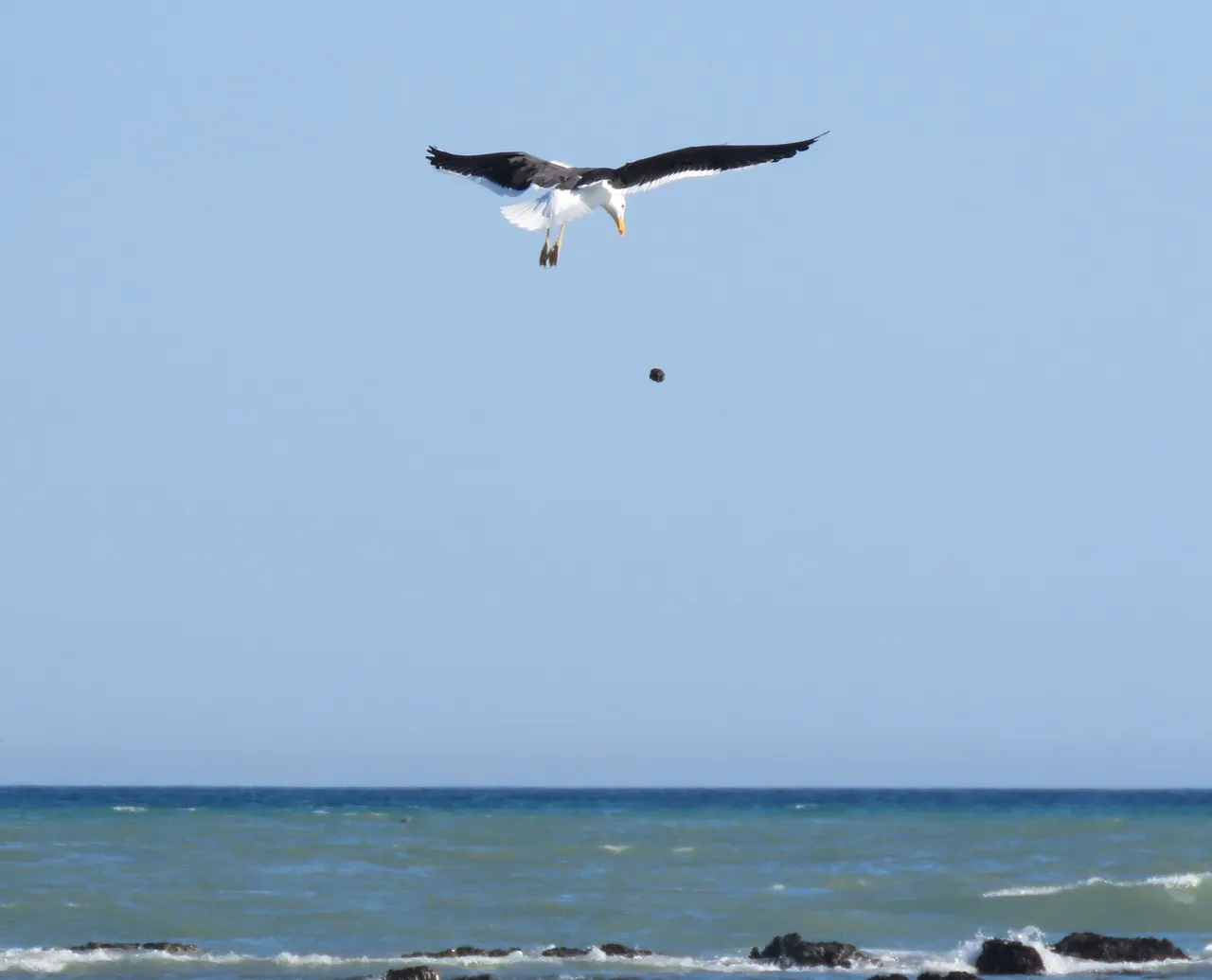
Now what is innovative about this you may ask?
When the shell cracks the Sea Squirt realizes that it's an attack and it releases a stinking squirt of water. The sea water washes the stinking water away before the bird eats the Sea Squirt.
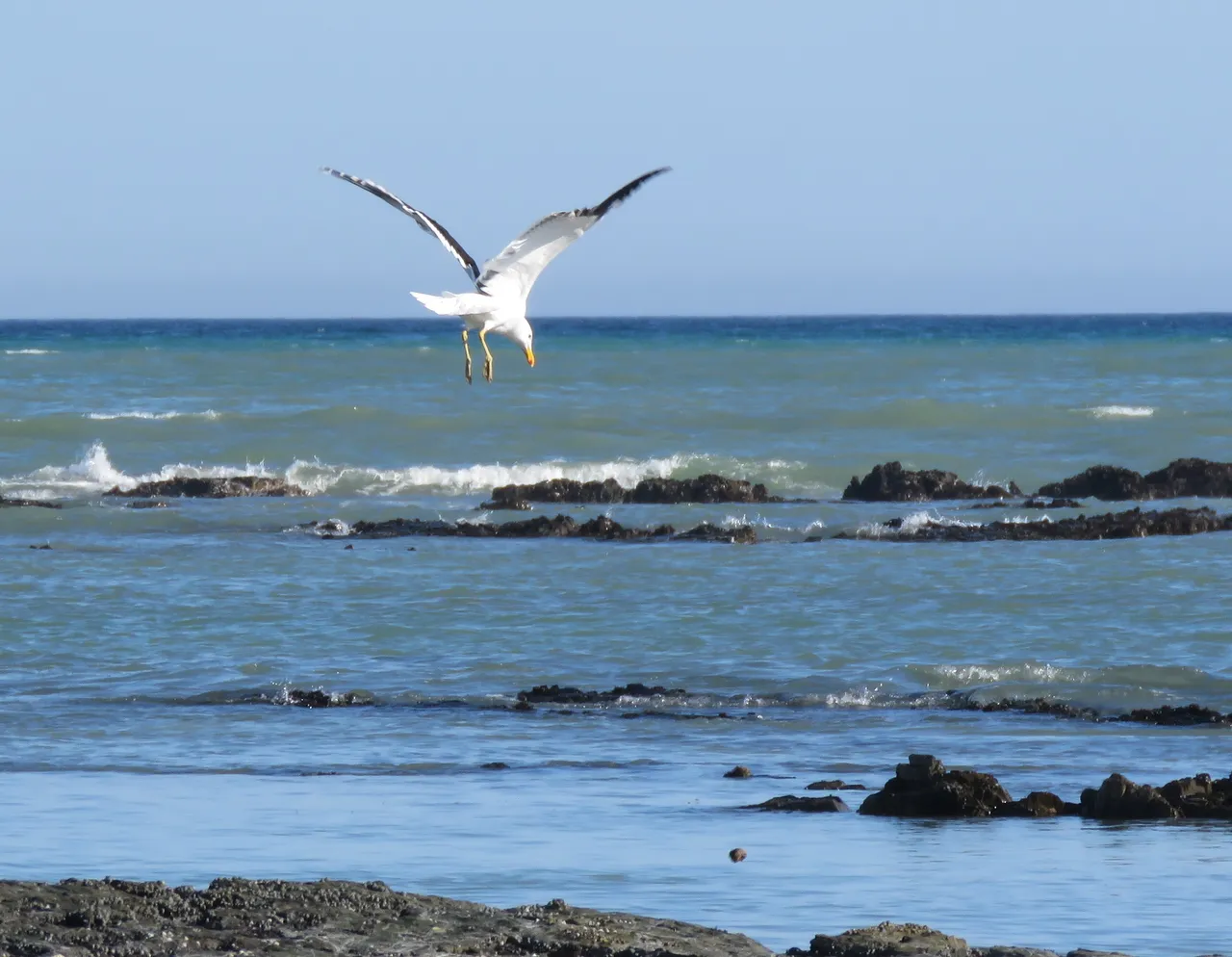
Post 2. Let's have a look at the Sea Squirts that the birds eat.
This part of the post is suitable for the #aquaticsentinels community hosted by @juanbg
This is what the juicy Sea Squirts look like and the fishermen find them as ideal bait to catch the big fish from the shore.
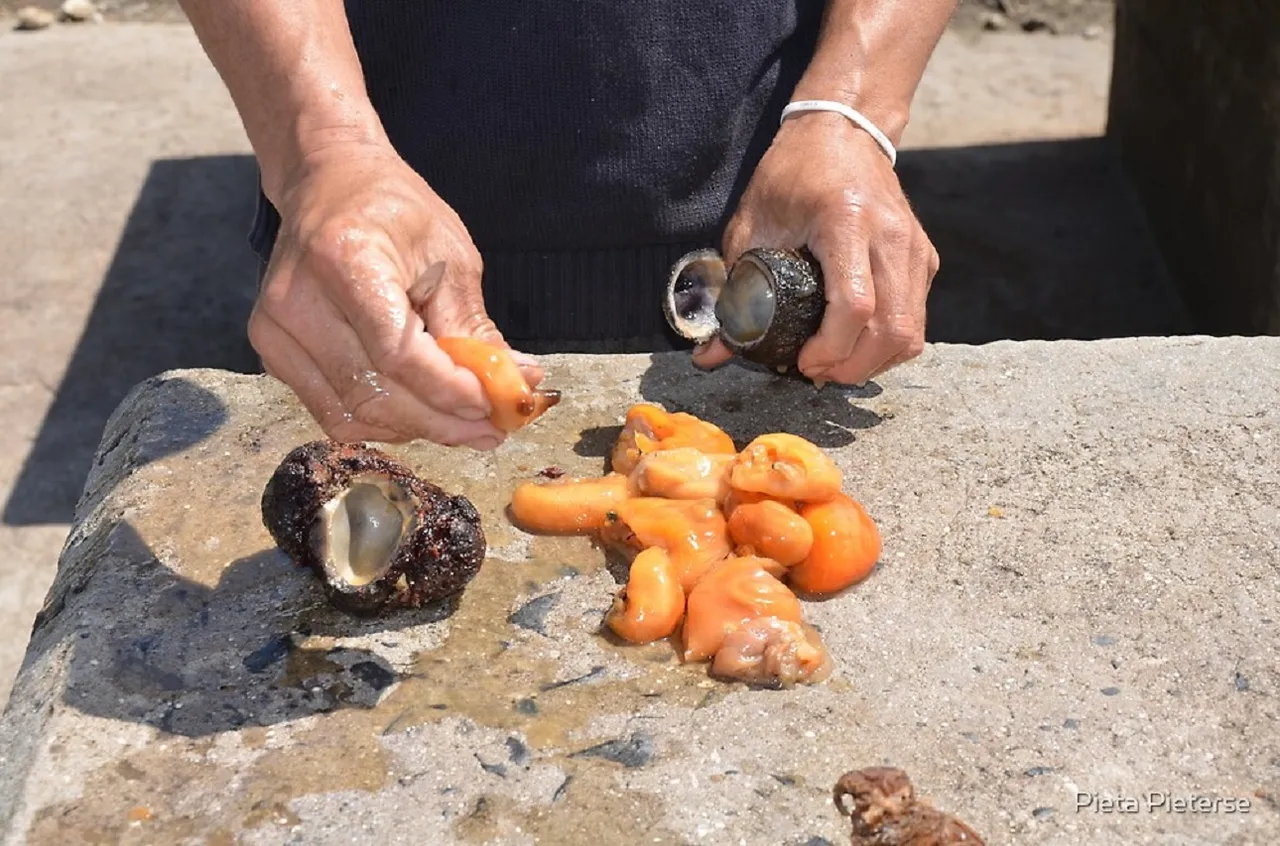
Source
Here you can see the bird picking up the Sea Squirt and the sand on the beach was covered by them. At high tide the sea will claim the sea squirts back. (My own photo)
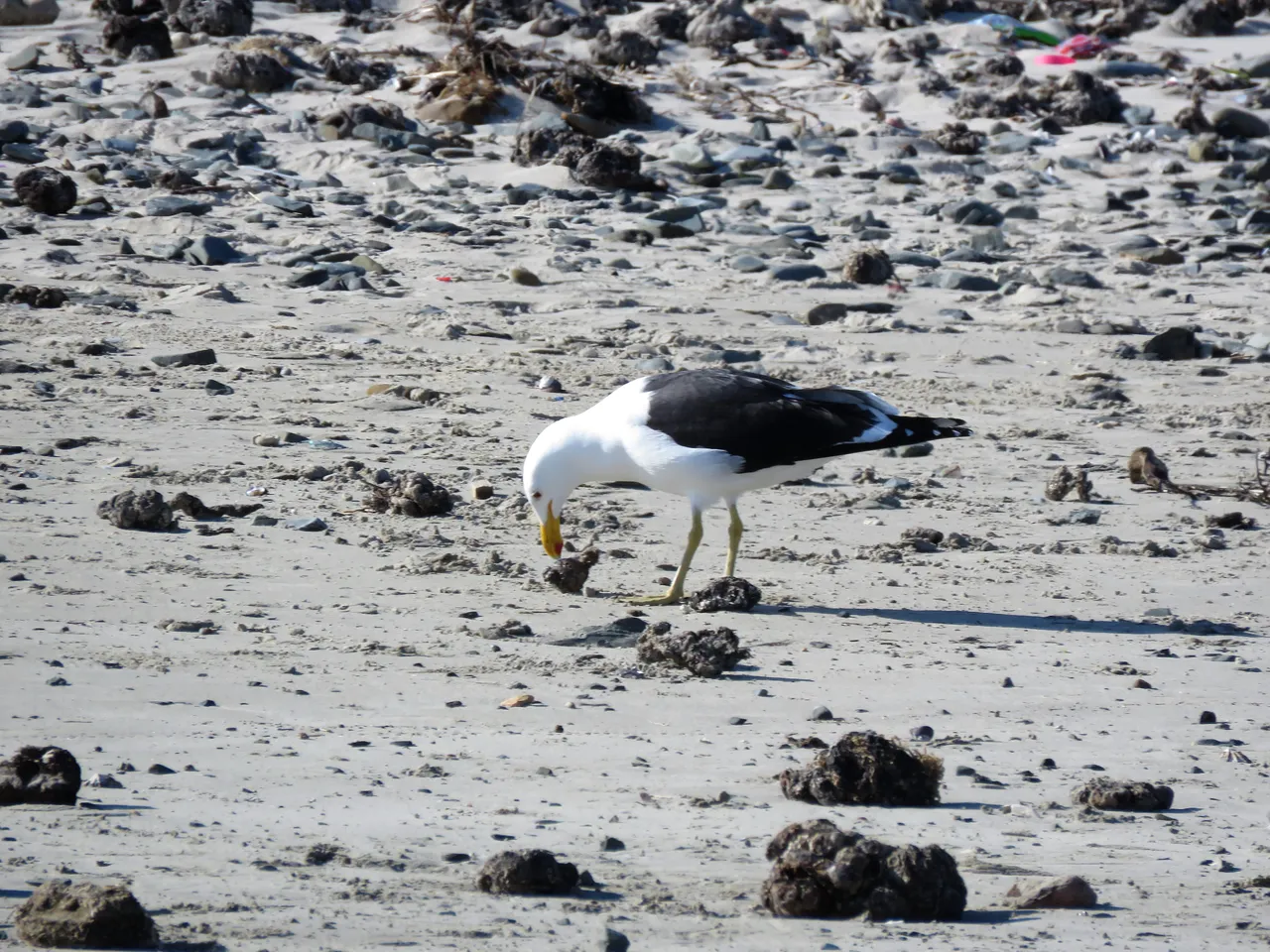
Pyura stolonifera, commonly known in South Africa as "red bait" (or "rooiaas" in Afrikaans), is a sessile ascidian, or sea squirt, that lives in coastal waters attached to rocks or artificial structures. Sea squirts are named for their habit of squirting a stream of water from their exhalant siphons when touched at low tide.
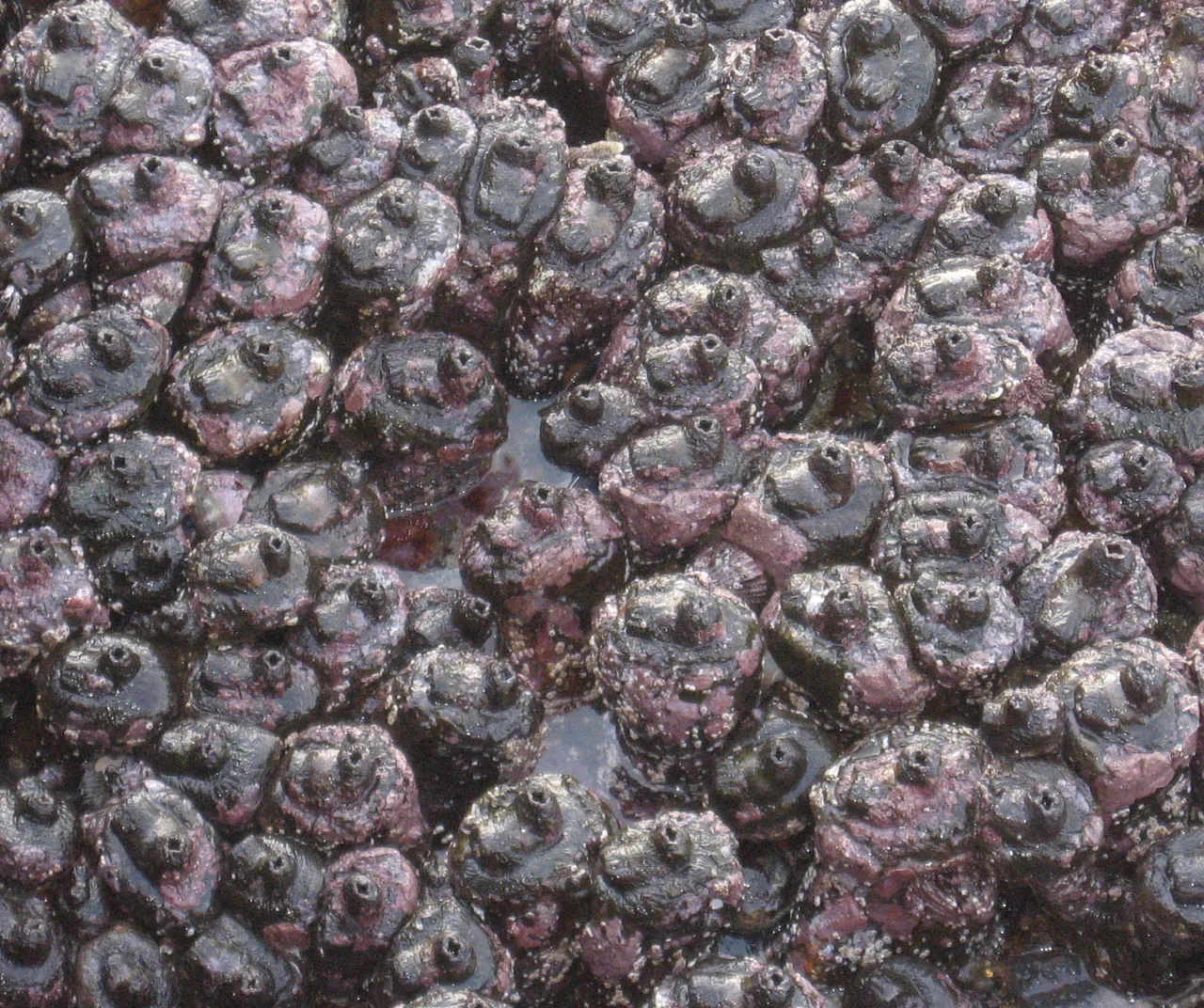
Pyura stolonifera is an ecosystem engineer that can drastically alter habitats. Dense aggregates like the one shown here can dominate all substrata from the mid-intertidal to the subtidal zone, exclude other sessile species, and provide habitat for other organisms (Photo: Marc Rius)
Source
This species is found in coastal areas of the cool-temperate and warm-temperate marine bioregions of southern African, from Namibia on the west coast to south-eastern South Africa, but is absent from the region's subtropical and tropical bioregions. It is found from the intertidal zone to at least 10 m underwater.
I think that the ancient fishermen watched the birds and that's where they got the idea to use the Sea Squirts as a bait called "Red Bait" over here.
There are also different species of Sea Squirts in Australia, New Zealand and other parts of the southern hemisphere.
For more information on the Sea Squirts please visit here
Photos by Zac Smith, except the cited ones-All Right Reserved.
Camera: Canon Powershot SX60HS Bridge camera.
We hope that you enjoyed this double post.
Thank you kindly for supporting a post by @papilloncharity
